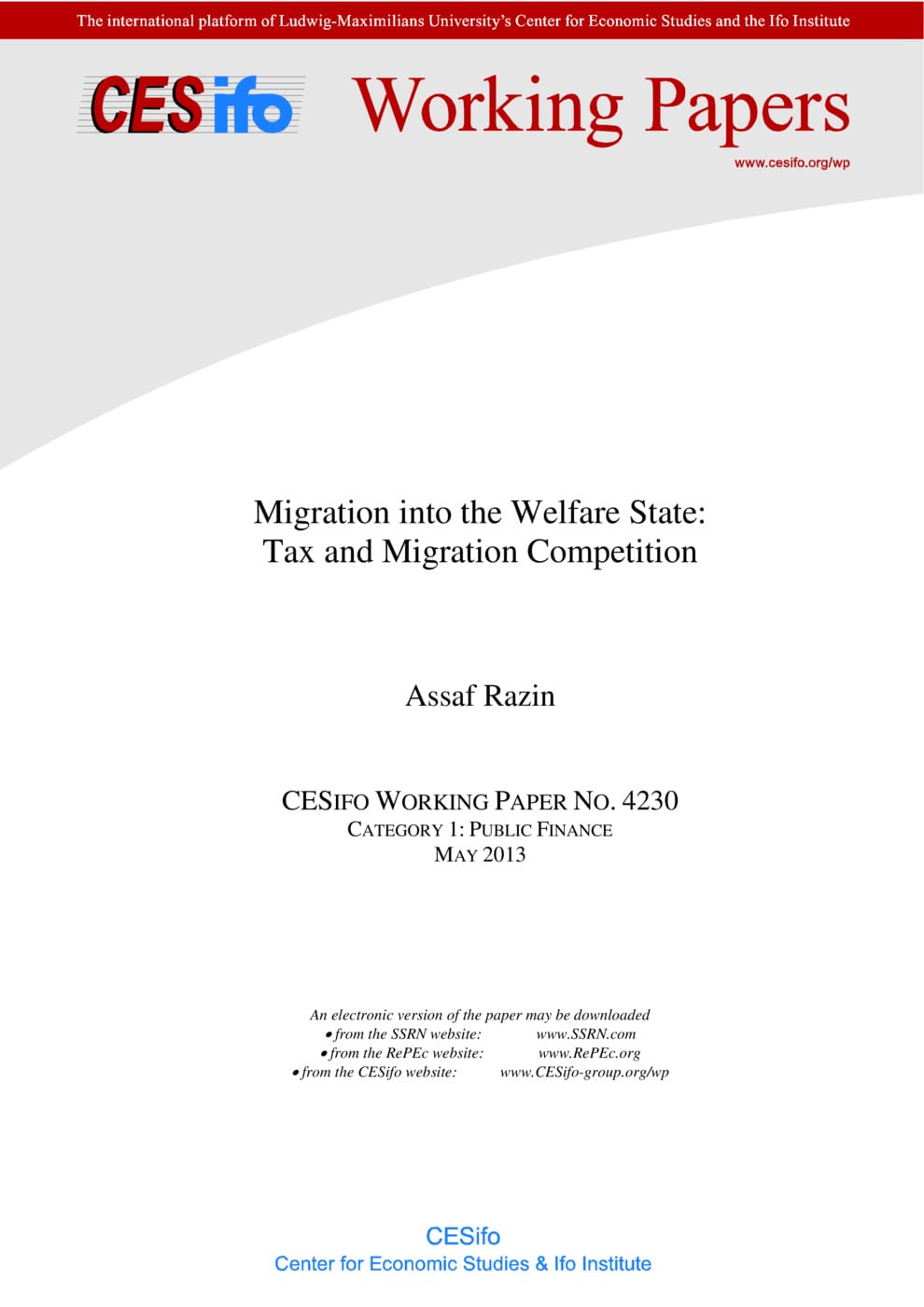Migration into the Welfare State: Tax and Migration Competition
CESifo, Munich, 2013
CESifo Working Paper No. 4230

In this paper I provide some support to the Tiebout hypothesis. It suggests that when a group of host countries faces an upward supply of immigrants, tax competition does not indeed lead to a race to the bottom; competition may lead to higher taxes than coordination. We identify a fiscal externality (fiscal leakage) that causes tax rates (on both labor and capital), and the volume of migration (of both skill types), to be higher in the competitive regime than in the coordinated regime. If the population growth rate is positive the young are always in the majority. When raising period t payroll taxes the young voter has a tradeoff between the negative effect ( an income transfer to the old) and a general equilibrium income boosting effect on her private pension in period t+1 and the social security benefit in period t+1. Tax rate is positive if the (state variable) the capital stock is within a certain range, or zero, otherwise. Migration share of native born population is at the max if the state variable, the capital stock, is in the above mentioned range, or intermediate level, otherwise. In the case of private saving only regime, the migration share is intermediate level. Thus, migration shares in the social security-cum-private-savings regime are either the same, or is more liberal than in the private savings-only regime. A social security system effectively create an incentive, through the political-economy mechanism, for a country to bring in migrants.
Public Finance
Trade Policy